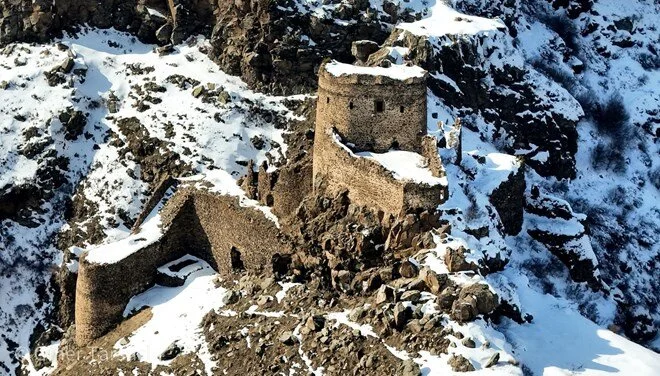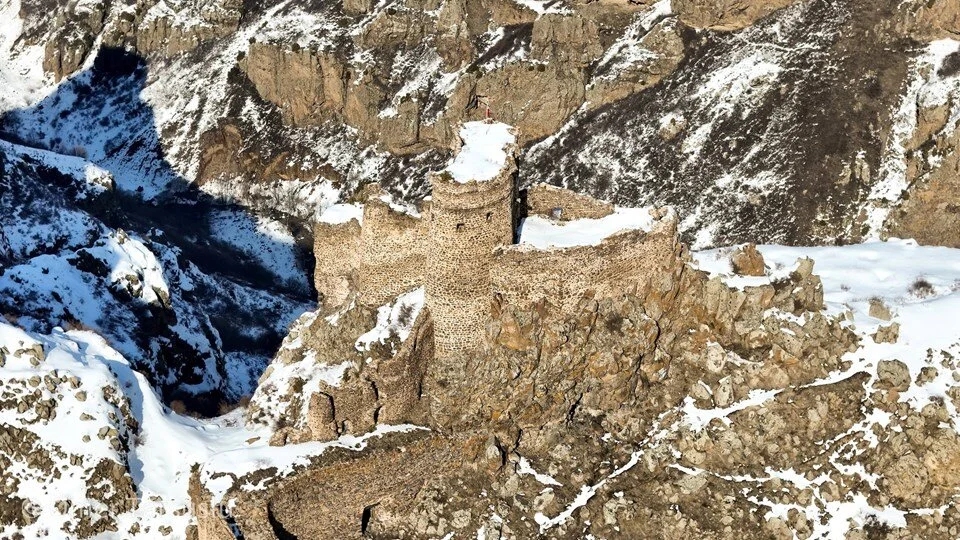
The Devil’s Castle in Ardahan, which is estimated to have been built by the Urartians, will be restored
The Devil’s Castle (Şeytan Kalesi in Turkish), located in Ardahan in eastern Turkey, will be restored by the Ministry of Culture and Tourism. The castle is estimated to have been built by the Urartians.
The restoration of the Devil’s Castle, located in the heart of the Karaçay Canyon, aims to transform the region into a major attraction for nature and cultural tourism.
Uğur Dede, the Provincial Director of Culture and Tourism for Ardahan, highlighted the potential of the region:
“This canyon is suitable for all kinds of activities and events. From mountaineering to hiking trails and hydrotherapy, many different activities can be organized here. It has significant potential in many ways. We need to work comprehensively and systematically to develop the region. The castle currently welcomes around 60 thousand tourists per year. Even in winter, we see around 35-40 people visiting daily. It is also an important region for faith tourism.”

Dr. Suat Vural, a faculty member at the Faculty of Humanities and Letters at Ardahan University, commented on the castle’s resemblance to Urartian fortresses in terms of its location and architectural features:
“The Kur Valley, where the castle is located, is a natural passageway between the Caucasus and Anatolia. Therefore, it is the most important and fortified castle of the Upper Kur region. Due to its location, it has been greatly affected by historical events. It was invaded by the Persians, Macedonians, and Seleucids. Remaining under the rule of the Araxes Kingdom for a period in the 2nd century BC, the Devil’s Castle joined the Roman Empire in the 1st century BC. When Roman domination weakened in the 1st century AD, the castle came under the control of the Parthians and then the Sassanids, changing hands between the Sassanids and Byzantines at times. It was also raided by the European Hun tribes from 359 AD onwards.”
You may also like
- A 1700-year-old statue of Pan unearthed during the excavations at Polyeuktos in İstanbul
- The granary was found in the ancient city of Sebaste, founded by the first Roman emperor Augustus
- Donalar Kale Kapı Rock Tomb or Donalar Rock Tomb
- Theater emerges as works continue in ancient city of Perinthos
- Urartian King Argishti’s bronze shield revealed the name of an unknown country
- The religious center of Lycia, the ancient city of Letoon
- Who were the Luwians?
- A new study brings a fresh perspective on the Anatolian origin of the Indo-European languages
- Perhaps the oldest thermal treatment center in the world, which has been in continuous use for 2000 years -Basilica Therma Roman Bath or King’s Daughter-
- The largest synagogue of the ancient world, located in the ancient city of Sardis, is being restored











Leave a Reply